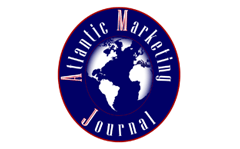Publication Date
2024
Abstract
Abstract
Purpose Preventive health care information (PHCI), which functions as a cost-effective or cost-saving means of reducing mortality and improving life quality, also fuels consumer demand for otherwise underutilized preventive medical services, thereby improving profitability for service providers. This study provides healthcare marketing professionals with media usage insights and psychographic profiles useful for developing effective PHCI communication strategies.
Design This research is based on questionnaire responses (n = 813). Analysis of the variance (ANOVA) was used to assess and compare the importance consumers assigned to online PHCI sources. Factor analysis was used to determine whether attitude patterns tended to covary. ANOVA was used to compare generations according to five composite factored variables.
Findings Institutional websites and internet search engines were among the most important PHCI sources. Millennials assigned significantly greater importance to 20 of the 27 sources. YouTube was the only mainstream social media and networking (SM&N) site to which consumers assigned importance. Five composite factors were identified. Millennials were significantly more likely to report attitudes and behaviors of the “Techy” healthcare consumer (p = 0.000) and “Other-Oriented” healthcare consumer” (p = 0.000). Baby Boomers were significantly more likely to report attitudes and behaviors of the “Responsible” healthcare consumer (p = 0.003) and the “Clinician-Connected” healthcare consumer (p = 0.000).
Originality This research offers new insights concerning Baby Boomer, Generation X, and Millennial healthcare consumer use of digital resources to access preventive health care information (PHCI), along with psychographic profiles useful for developing message strategy.
Research Implications This study contributes to the body of research concerning health information-seeking behavior (HISB) (Lambert and Loiselle, 2007; Mills and Todorova, 2016). It expands knowledge of online consumer behavior when accessing PHCI and provides psychographic profiles for Baby Boomer, Generation X, and Millennial healthcare consumers.
Practical Implications Deeper understanding of consumer attitudes, behaviors, and internet use as related to PHCI has the potential to improve healthcare communications meant to fuel demand for otherwise underutilized preventive health services with the potential to improve provider profitability, positively impact and lengthen consumer lives, bridge gaps in health care access, and reduce reliance on an overtaxed health care system.
Included in
Advertising and Promotion Management Commons, Business and Corporate Communications Commons, Health Communication Commons, Marketing Commons
